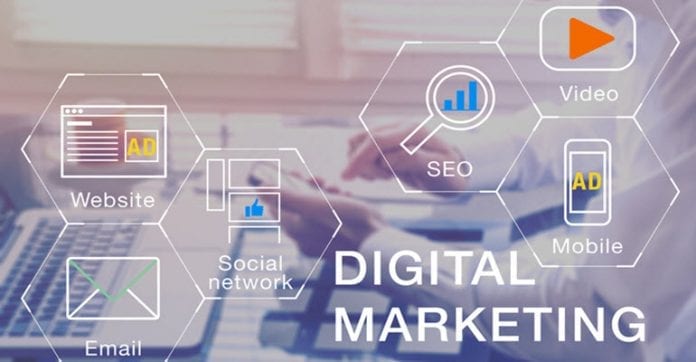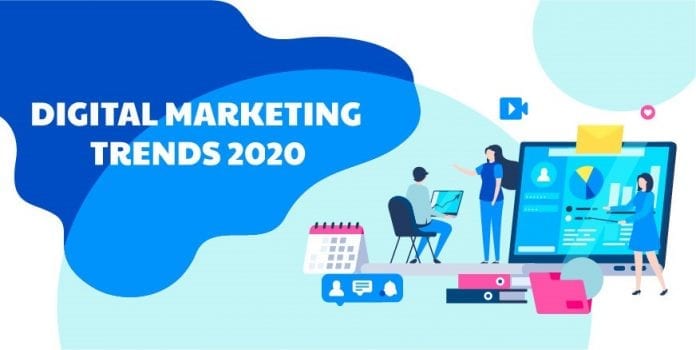In the digital era, COVID-19 is a completely unprecedented time, filling everybody with uncertainty and changing the way that we approach most aspects of life at the moment and this is not limited to our daily routines but our businesses and how we market our products and services.
Digital marketing was already an integral part of marketing for most, if not all businesses and digital marketers are often changing the way they approach digital marketing based on trends. It would seem to minimise to call COVID-19, simply, a trend. However, like trends, COVID-19 has had a large impact on digital marketing and the way that we are using it. Here are some of the most patent ways that businesses have switched up their digital marketing efforts. If you’re struggling to make the changes in your stride, this might help you gain a new perspective.

Reliance on Digital Marketing
Digital marketing in a time like this can be crucial for maintaining your business activity. This may be especially true for businesses that operate from a bricks and mortar shop who have now found themselves relying on online sales to cover expenses and raise revenue. However, with budget cuts being made everywhere, only 7% of UK brands are actually seizing the opportunity to invest more in advertising.
Rethinking Digital Tools
While some businesses aren’t thinking about spending more on ads, some may be taking stock of the tools they are currently using and measuring whether they need to make a change. For example, an owner of an eCommerce business may be looking at ways to maximise their profits in-house via their eCommerce platform, in order to do this, they need to look at whether their current platform can offer them the tools they need and if it doesn’t, they might decide to look for a more robust solution. Others may decide to invest more in their current tools or invest in completely new ones. As strategies change, marketers need to ensure they have the right tools to implement new strategies to maximise impact. Remember to sync your contacts using PieSync.
Redefining Marketing Intentions

Whenever there is a change in digital marketing trends, marketers will look to shift their goals to align their intentions and their potential outputs. Say your main marketing aim pre-COVID was to target new audiences but since the pandemic, your new aim is to target current and past customers and encourage them to make new purchases. Currently, retargeting is one of the best performing strategies with a 43% increase of buyers returning to a shopping app – according to Adjust and it makes sense, as most consumers are more likely to buy from brands they already know and trust.
An Increase in Social Listening
Knowing what consumers want and need is one of the key parts of forming a marketing strategy based on customer insights. Social listening, now more than ever, is one of the most effective ways to gather this information which includes, trending topics, trending keywords, and brand mentions. According to Napoleon Cat, in the US, there has been a 2.5% increase in active Facebook users, accounting for 5,700,000 users. More users = More insights, giving marketers a clearer picture of what consumers are talking about. But why is this important? As the course of the pandemic changes, consumer buying decisions change so being able to understand why and when those changes might take place, businesses can market their business accordingly.
Automation Driven Marketing
Upgrading digital marketing tools with automation techniques has boosted omnichannel marketing by streamlining multiple tasks which will, in turn, maximise workloads.
Many businesses have had to make the tough decision of reducing staff and many others have halted hiring new staff. For some businesses, this has left a large gap in job roles. While automation doesn’t replace jobs, it can take the load off certain aspects of digital marketing to make business operations more efficient.
Rewarding Customer Behaviour
Encouraging past and current customers to make repeat purchases has been the aim for a lot of businesses during this time. Rewarding customers is one of the ways that retargeting can be done. These rewards usually come in the form of an offer and often reward customers whenever they take action with a business, from making a purchase to refer-a-friend schemes in which a customer can gain a reward for referring a friend. But rewards aren’t just for retargeting, offering new subscribers a welcome coupon which they can spend upon their first purchase is one of the ways that businesses often reward potential customers.
The Importance of Analytics

Right now, one of the most crucial tools that businesses have is data. Of course, businesses should be using analytics to measure performance but during the pandemic, these insights are invaluable. Analytics is key for current highlighting trends in order to forecast future trends. It’s also key for businesses to be able to track their performance, indicating areas in their digital marketing efforts that have been successful and areas that haven’t performed well. While this data can’t exactly predict the future, surely no one could foresee a pandemic, they are useful for businesses who want to adapt to the changing tide of COVID-19 and plan beyond it.
Final Thoughts
Digital marketing changes with all sorts of trends and so it stands to reason that the current pandemic should be no different. The changes that have come recently are reshaping the way that businesses approach their planning before even implementing new marketing strategies. This will continue to shift as the course of the pandemic continues. Try as we might there is no way to truly predict what will happen but businesses can try to stay alert to the news (as lockdown measures change), to current shopping trends and keep conversations going with your customers about what they want and need. After all, the best way to stay in the loop is to connect to the source.
Has your marketing strategy been impacted by the COVID pandemic? If so, what changes did you need to make?









